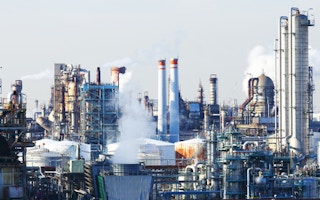The UN Intergovernmental Panel on Climate Change (IPCC) released on Sunday its third of four planned reports. This one is on mitigation, or the “human intervention to reduce the sources or enhance the sinks of greenhouse gases.” There have been many such reports before by the IPCC and others; and many more reports are on their way.
To continue reading, subscribe to Eco‑Business.
There's something for everyone. We offer a range of subscription plans.
- Access our stories and receive our Insights Weekly newsletter with the free EB Member plan.
- Unlock unlimited access to our content and archive with EB Circle.
- Publish your content with EB Premium.
We have no reason to expect this latest IPCC report to galvanize the extensive climate action that’s needed. As I have argued, the 25-year track record of the climate movement is one of failure where it matters. Very little has been achieved despite scientists sounding the alarm time after time.
Perhaps adapting the lessons learned from other successful social movements could be a promising path forward?
“
Ninety companies are responsible for two-thirds of the harmful emissions generated since the industrial age began. All are oil, gas, coal or cement companies
First, to push forward effective climate action we need to define the target narrowly. Harmful emissions come from many activities (the power sector, the transportation sector, agriculture, housing and others), and multiple energy sources (coal, oil, gas, land use). This variability contributes to the size of the climate movement (huge) and its propensity to shoot in multiple directions to try and cover oil, gas, coal, construction, transportation, manufacturing, food, travel, waste, e-waste, and many other industries.
In reality however, the “market” can be narrowly defined: Ninety companies are responsible for two-thirds of the harmful emissions generated since the industrial age began. All are oil, gas, coal or cement companies and their CEOs can conveniently fit in a short Tesla convoy. They control five times as much oil, coal and gas as it is safe to burn; in other words, 80 per cent of their reserves must be locked away underground to avoid a catastrophe. This tiny number of large companies, lobbying to prevent government action on climate change, are at the heart of our current carbon-intensive model destroying the planet. The target market is therefore clearly small and contestable – it’s how we contest it that matters.
Second, the climate movement must focus its message on people, not animals or things. Climate change challenges the most basic human rights: The right to life (climate change kills people), the right to subsistence (increased droughts, water shortages and floods affect the means of basic subsistence) and the right to health (climate change spreads diseases and injury). In Bangladesh alone, rising sea levels are expected to inundate 17 per cent of the land and displace 18 million people; a similar story can be said for Manhattan’s Upper East Side.
Research shows that climate change will impact society and could increase violent behaviour; political stability could be threatened and governing institutions put under further pressure. While endangered polar bears and a polluted planet drive sympathy, they don’t drive global action for a good reason: Earth will still be there after we are gone. More climate action could arise if the scale of present and future human suffering were to be communicated consistently and becomes clear to all.
Third, to move towards significant climate action we need a drastic cut in emissions, leading to an economy fuelled with renewable energy. This much is clear. The problem is that the costs of climate action are not always accepted because it is not clearly understood what damages fossil fuels are causing. For example, according to a 2012 KPMG report, the largest 3,000 companies by market capitalization cause some £1.29trillion of environmental damage per year. All the climate action in the world won’t cost a fraction of this amount. We should also bear in mind that when human rights are violated, costs must take a back seat: Doing away with slavery was extremely costly to slave owners but these costs were not relevant to the argument.
In short, a coherent approach to climate action would focus on the largest culprits, a small group of 90 companies. Fundamental change can be effected by focusing on their violations of basic human rights and the resulting suffering caused to tens of millions of people today, and many more tomorrow. Through effective action, these companies’ standing would be cut to what it should be, about 20 per cent of the size they are today – shifting investment capital away from them and towards clean energy and innovation. Starved of capital, they would no longer be able to extract the 80 per cent of fossil fuels we can’t afford. This process of change would be supported by strong institutions which would become increasingly required as this change lifts off.
However, talking about human rights to the 90 companies sinking the rest of the world won’t work: witness Exxon’s recent disclosure about climate risks where it brazenly stated that in fact it doesn’t see how these are related to its plans to exploit all of its oil and gas reserves through 2040. Climate action should therefore focus on a narrow objective: Shrinking the market capitalisation of the companies most responsible for climate change and limiting their access to capital, thereby stifling their ability to exploit reserves and grow. This would dramatically slow emissions, while moving massive amounts of capital to where it belongs: economies and lifestyles fuelled by a clean energy infrastructure.
This piece is the third in a series by Assaad W. Razzouk on reviving and reinventing the global climate movement. In Part 4, the author will explain how he believes the approach above can be put into action. This article first appeared in The Independent.











